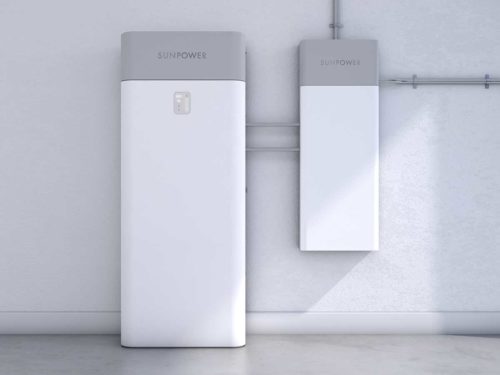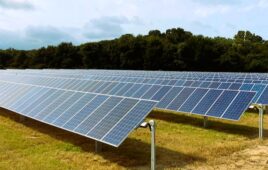Some of the more popular solar installation solution providers have made the solar + storage sales process even easier for their dealers and authorized installers to perfect. In addition to providing solar panels and packaged mounting and inverters, companies like SunPower, LG and Panasonic have now brought branded energy storage systems into their residential offerings. The goal is one-company-backed warranties for systems, rather than making installers piece together multiple branded products with differing coverage lengths.
 This is all perfect timing considering residential storage’s expected incline, especially as California residents grapple with utility shutoffs during extreme weather. The United States installed a record-breaking 35 MW of residential storage in Q2 2019, beating the last record-setting quarter (Q2 2018) by 9 MW. With more customers requesting solar and storage based on brand awareness, SunPower, LG and Panasonic were smart to bring exclusive batteries into their portfolios.
This is all perfect timing considering residential storage’s expected incline, especially as California residents grapple with utility shutoffs during extreme weather. The United States installed a record-breaking 35 MW of residential storage in Q2 2019, beating the last record-setting quarter (Q2 2018) by 9 MW. With more customers requesting solar and storage based on brand awareness, SunPower, LG and Panasonic were smart to bring exclusive batteries into their portfolios.
“We’re entering a new solar decade as storage adoption increases with the advancement of battery technologies, and with accompanying services becoming standard,” said Norm Taffe, SunPower executive VP of residential solar, in a press release.
LG first released two battery options (an AC-coupled 5-kW system and a DC-coupled 7.6-kW system) to its loyal installers in 2018. SunPower and Panasonic both made storage product announcements at Solar Power International 2019. SunPower’s lithium-iron phosphate Equinox Storage product provides up to 12 kWh of storage capacity. Panasonic (which had previously partnered with Pika Energy for storage) released its EverVolt system, also available in AC- and DC-coupled versions that can be expanded up to 34.2 kWh.
“Energy storage is one of the fastest-growing segments in the renewable energy space, and homeowners are eager to find a product that fits their exact needs,” said Mukesh Sethi, group manager at Panasonic Solar, in a press release.




Trouble is, you are talking about “blended” payback. In most cases, we can get a better return on investment by buying only the solar panels – adding batteries only increases the time of payback, giving a poorer ROI.
Also, batteries increase CO2 emissions at the present time due to storage round-trip inefficiencies – it would be better to export your excess generation, for non-solar neighbours to use, thereby immediately offsetting fossil fuel generated energy. Going “off grid” makes things worse.
The utility companies , mostly govt owned look upon solar as a threat . Creating hurdles in net metering . They see it as a threat , little realising that technology will prevail . No one has been able to stop it . I am eagerly looking for the day when storage becomes viable , achieving grid parity . Those having enough space for installing required capacity PV panels are likely to deflect from the grid . The distribution companies fail to realise this. Perhaps by 2025 storage and increased efficiency of PV panels reducing space requirement may accelerate the process of grid deflection
It is this smart ESS packaged system that is attractive to many. With electric utilities “fighting to the death”, to get rid of Net Metering and forcing Net Billing on ratepayers past and present, the battle is on. Taking a Net Metering PPA of a one to one energy credit price point and changing it to wholesale electricity rate cuts the price point of every kWh excess generation to about 1/3rd to 1/4 of it’s original value under Net Metering. Value of a distributed generation system, “avoided costs”, the utility doesn’t have to pay for and usury committed by not even trying to determine how much solar PV energy a non-solar ratepayer uses in a day. When one is using non-fueled solar PV generation, there should be NO “fuel” charge or TD&D charge tacked onto the kWh of distributed, clean energy used in the home. The sweeping change that seems to be catching on in more and more States, is the TOU. The electric utility cries, the peak solar PV generation creates a ‘negative’ revenue stream of the “duck curve”. Then when solar PV generation rolls off for the day, the “spike” in demand causes the utility to (have to) contract with fueled generation providers at a premium cost, electricity bought on the spot market from about 3 PM to 9 PM each day.
In California, the early adoption by home owners and even utility scale generation units, created the need to “dump” power during the solar PV peak generation time of day, usually from 10 AM to 2 PM each day. CAISO got involved and has “determined” that instead of paying another State to take the over generation of wind and solar PV, just shut off or ‘curtail’ a solar PV or wind farm and buy a fueled generation contract on the spot market at a premium price to ramp around grid demands. Yeah, throw away clean non-fueled generation by ‘curtailment’ and buy dirty, costly fueled generation at premium prices to address the grid demands. Then the next hit to personal solar PV is the TOU. No more than rate spiking during the late afternoon early evening hours to capture lost revenues and ‘dilute’ the value of a ratepayer’s solar PV system. There is ROI, then there’s the game of utility programs that stack the deck in favor of the utility and against the solar PV adopter. People are starting to (see) the ‘value’ of the technology, they know sooner or later it will pay for itself. When that day comes, the ratepayer can do something else with the money saved in electricity costs. Pay for the home insurance, auto insurance, buy groceries, Birthday, Christmas presents.